Must see
When you teach and write about movies for many years, you get used to hearing a familiar question: “Would you be willing to come up with a list of films you think I should see?”
I’ve done this many times, employing an admixture strategy that combines heralded screen classics with more recent films that I found especially notable.
A frustrating challenge in citing classic films always arises from the fact that most of the world’s talented artists have produced one great work after another.
Take Charlie Chaplin. Would one consider his “classic” to be The Gold Rush (1925), City Lights (1931), or The Great Dictator (1940)? What about John Ford? Do you choose The Informer (1935), Stagecoach (1939), or The Grapes of Wrath (1940)? And then there’s Frank Capra. How do you choose between It Happened One Night (1934), Mr. Smith Goes to Washington (1939), and It’s a Wonderful Life (1946)?
And that doesn’t even begin to address the films of Bergman, Truffaut, Godard, De Sica, Fellini, Ozu, Wertmuller, Hitchcock, Kurasawa, Kubrick, Wajda, Altman, Scorsese, and so many others.
Randomly, and in no particular ranking order, I’m suggesting a dozen films that I believe deserve a “must see” and maybe a revisit or two. Critic Stanley Kauffman said the truest test of a great film is one you can revisit and find old and newer pleasures in each successive viewing experience.
In my selections I was particularly interested in films that conveyed powerful narratives and unique cinematic styling. I believe the first two choices of The Bicycle Thief and Wild Strawberries illustrate those criteria.
The Bicycle Thief (Thieves) (1948)
Director: Vittorio De Sica — Neo-Realism
One of cinema’s greatest humanitarian dramas tells the simplest of stories in a narrative that seemingly just happens. This technique often is referred to as a “found” or “flow-of-life” narrative. Set in a time of dire economic conditions in post-World War II Italy, the film follows Antonio, a husband and father of a young son, Bruno, and a baby daughter. Antonio has long been unemployed. One day he’s offered a job hanging movie posters on billboards across Rome. But the job requires a bicycle, so Antonio’s wife, Maria, pawns linens from her wedding trousseau to reclaim their impounded bicycle. Unfortunately, the bike is stolen on Antonio’s first day, and he will lose his job without it.
Vittori0 De Sica’s profound neo-realist film becomes a tale of abject desperation, illustrated in objective correlative actions that reveal Antonio’s growing frustration and an ultimate breakdown of his value system. When Antonio attempts to steal a bicycle resting on a wall outside a soccer stadium, he is apprehended and humiliated in the presence of his son, Bruno. As the two walk away, tears streaming down their faces, Bruno reaches up and takes his father’s hand.
Italian director Roberto Rossellini defined neo-realist filmmaking as saying, “This is the way life is.” The Bicycle Thief hits all the notes: social consciousness, simple stories about ordinary people, nonprofessional actors, location shooting, avoidance of melodramatic bravado, and thematics that deal with unjust systems that challenge and disillusion good people.
The Bicycle Thief emerges from a sequence of banal incidents to project human tragedy. An innocent individual becomes victim of, as well as accomplice to, behavior often impelled by social hardship.
Wild Strawberries (1957)
Director: Ingmar Bergman — A Metaphorical Journey
Ingmar Bergman invites us on a stylized journey through time as renowned medical professor Isak Borg (Victor Sjostrom) travels to his alma mater to receive an honorary degree for his life’s work.
Throughout the drive, Borg conjures memories, fantasies, and visions of unrequited love, medical school days, an unhappy marriage, and strained relationships with his son and daughter-in-law. Borg shares revelations and reminiscences with random hitchhikers he picks up along the way. Together the tales suggest aloofness and selfishness contributed to Borg’s unfulfilled life. The car trip becomes a metaphor for life’s passage and cinematographer Gunnar Fischer’s incomparable black-and-white chiaroscuro lighting design brilliantly underscores the psychological and nostalgic moods with expressionistic use of light and shadow. Victor Sjostrom, in his last film role, gave sustained poignancy to a character in search of the meaning and value of his life. A master of introspective analysis and allegorical filmmaking, Bergman has few equals in exploring on screen the complexities of the human condition.
The Man with a Movie Camera (1929)
Director: Dziga Vertov — Documentary “Cinema Truth”
Critics and historians often cite Vertov’s documentary as a singular masterpiece of nonfiction filmmaking. The film is a dynamically charged visual study of daily life in a large, post-revolution Russian city. As dawn breaks over the skyline, juxtapositions abound: a wedding, a funeral, a woman giving birth, ambulance workers tending to an accident victim, a fire engine racing through the streets. An ever-present movie cameraman appears in one locale after another, shooting scenes that in the edited film come with speeded motion, split-screen imagery, multiple-exposure shots — all to capture with poetic visualization the energy and industrial spirit that are deemed vital to the success of the young Russian state. In his earliest work in newsreel documentaries Vertov developed the concept of Kino-Pravda (“cinema truth”) with the goal he said of “making the invisible visible, the obscure clear, the hidden obvious, the disguised exposed.” The Man with a Movie Camera does just that.
All Quiet on the Western Front (1930)
Director: Lewis Milestone — World War I
One of cinema’s greatest war films and one of the first significant sound motion pictures, Milestone’s adaptation of Erich Maria Remarque’s pacifist novel scored a major achievement for Universal Pictures. All Quiet on the Western Front offered poignant treatment of the final stages of World War I. The German soldiers — many of whom were teenagers — received sympathetic treatment from Milestone. It was an unusual choice, and offered a larger understanding of war’s tragic personal consequences. Realistic battle explosions, gunfire, and human cries enhance the sound design. All Quiet on the Western Front received universal acclaim for its revelations of the physical and moral prostration of those caught up in the throes of military conflict.
Rebecca (1940)
Director: Alfred Hitchcock — Psychological Drama
Literary experts assert that Daphne du Maurier’s 1938 psychological novel Rebecca is one of fiction’s greatest literary achievements. Combining mystery and crime with Gothic tailoring, du Maurier’s narrative recounts the indelible memories of a naive young narrator who marries emotionless widower Maxim de Winter. The wide-eyed bride comes to reside with him in Manderley, a stately mansion in Cornwall on England’s coast. Soon, de Winter’s deceased wife, Rebecca, becomes an all-consuming presence that wreaks havoc on the nascent marriage. Resentful housekeeper, Mrs. Danvers, exacerbates the ingenue’s insecurity by constantly comparing her to her glamorous predecessor.
The film version of Rebecca was Hitchcock’s first American project. Its strong expressionistic “Hitch” touches led New York Times critic Frank Nugent to describe Rebecca as “an altogether brilliant film, haunting, suspenseful, handsome, and handsomely played.” (March 29, 1940). Laurence Olivier earned accolades for his brooding Max de Winter, Joan Fontaine declared perfect as the second wife, and Judith Anderson “menacingly rigid” as Mrs. Danvers. Rebecca won the 1941 Oscar for Best Picture, thus securing its place as a permanent classic in psychological film history.
The Third Man (1949)
Director: Carol Reed — Political Film Noir
I have long placed Reed’s film alongside Orson Welles’ Citizen Kane (1941) as a work of inestimable cinematic quality and historical value. Based on a screenplay by Graham Greene, The Third Man explores the emerging cold-war political mood in post-WWII Vienna. Among the characters is a down-and-out pulp-fiction writer Holly Martins (Joseph Cotten) who comes to Austria in search of his childhood friend Harry Lime (Orson Welles). Lime is said to have died, leaving behind a griefstricken girlfriend (Alida Valli). Unconvinced about Lime’s death, Martins searches for more information. A dark shadowy tale of noir styling, The Third Man reveals Allied-occupied Vienna as a place of greed, corruption, and unabashed amorality. Mood and irony are underscored by Anton Kara’s music track played entirely on a zither. Free use of canted “Dutch-angle” shots adds to the unsettled tensions at work in the film. In 1999 the British Film Institute named The Third Man the greatest U.K. film of all time.
Rashomon (1950)
Director: Akira Kurasawa — Truth and Human Subjectivity
Uniquely innovative in concept and narrative structure, Kurasawa’s film serves as an outstanding philosophical inquiry into the nature of perceived “reality.” Set in medieval times, the narrative repeats four accounts of a rape and murder (suicide?) in a forest opening. In factual detail the incident involves a samurai merchant and his wife who are attacked by a notorious bandit. A woodcutter who claimed to have witnessed the crime, shares his story with two other men. In the “flashback” accounts, Kurasawa presents the samurai, his wife, the bandit, and the woodcutter, each recalling their memory of how the event occurred. Self-serving perspectives appear to unfold as Kurasawa’s visualizations are altered to depict the varying interpretations. Each character acts and speaks to save face, as if offering contradicting courtroom testimony. On another level Rashomon suggests artistic (filmic) treatments of reality are, like human accounts, illusory and ambiguous.
Once Upon a Time in the West (1968)
Director: Sergio Leone — Western Nostalgia
This film is a grand epic by “spaghetti western” director Sergio Leone and features a wide assortment of unforgettable characters portrayed by Claudia Cardinale, Henry Fonda, Jason Robards, Charles Bronson, Gabrielle Ferzetti, and Keenan Wynne. They inhabit the fictional town of Sweetwater, an area where ownership of land is being contested for the building of a railroad. Betrayal and murder run rampant through the narrative. Fonda is cast against type as the villain while Cardinale has the role of a former New Orleans prostitute with a claim to stake.
Considering the film a “farewell masterpiece,” Leone said of his intentions: “I wanted to take the most stereotypical characters from the American western on loan. The finest whore from New Orleans; the romantic bandit; the killer who is half-businessman and half-killer who wants to get on in the new world of business; the businessman who fancies himself a gunfighter; the lone avenger. With these five most stereotypical characters from the American Western, I wanted to present an homage to the Western at the same time as showing the mutations which America was undergoing at that time. So the story was about a birth and a death.” (Sergio Leone: Once Upon a Time in Italy, Christopher Frayling, 2005.)
The Lives of Others (2006)
Director: Florian Henckel von Donnersmarck — Cold War Thriller
Among recent onscreen treatments of Communism and the Cold War, writer-director Florian Henckel von Donnersmarck’s The Lives of Others stands apart. The narrative is set in East Germany in 1984 at a time when surveillance by the State Secret Police (STASI) was pervasive. The subjects/objects of eavesdropping in the film are a socialist playwright, his actress/mistress, and the playwright’s superior in the Department of Culture.
Actor Ulrich Muhe offers an unblinking mask of determination as the STASI captain spying on the playwright whose loyalty to the state is under suspicion.
Los Angeles Times critic Kenneth Turan called the film “an inside look at how a surveillance society, set up to discover and prey upon human weakness, can make everyone a potential suspect and destroy everything it touches.” (Dec. 1, 2006). The Lives of Others is as much a thriller as it is a political statement — employing a tense cross-cutting strategy between the eavesdropper and his targets. This fascinating and timeless drama won the 2006 Oscar for Best Foreign Language Film.
Ida (2013)
Director: Pawel Pawlikowski — Poland’s Historical Past
Set in Poland in 1962, Ida’s protagonist is an orphaned woman, Anna, preparing to take her final vows as a nun. But first, the convent’s Mother Superior urges Anna to visit her only known relative, an aunt Wanda Gruz, who was a state prosecutor during the German occupation of Poland in WWII. Anna’s aunt reveals that the young woman’s parents were Jewish and her birth name is Ida Lebenstein. Aunt and niece set off on a road trip through the Polish countryside to discover what happened to Ida’s parents. As they travel, Wanda (Agata Kulesza), a worldly and troubled woman, encourages Ida (Agata Trzebuchowska) to experience some of life’s pleasures before taking her vows: “You should try. Otherwise what good are those vows of yours . . . Jesus didn’t hide in a cave with his books. He went out into the world.”
New York Times critic A.O. Scott summarizes their journey succinctly: “Mr. Pawlikowski penetrates the darkest, thorniest thicket of Polish history, reckoning with the crimes of Stalinism and the Holocaust.” (Dec. 11, 2014.) Praised for its reserved treatment and thematic restraint, Pawlikowski said of his work: “Ida is a film about identity, family, faith, guilt, socialism, and music. I wanted to make a film about history that wouldn’t feel like a historical film — a film that is moral but has no lessons to offer. I wanted to tell a story in which everyone has their reason, a story closer to poetry than to plot.” Those qualities earned Ida the Oscar for Best Foreign Language Film of 2013. It was a first for Poland.
Distant Voices, Still Lives (1988)
Director: Terence Davies — Autobiographical Memories
Though not a musical, Terence Davies’ uniquely brilliant Distant Voices, Still Lives relies heavily on music to tell its story. The picture depicts the world of a British working-class Catholic family living in Liverpool in the mid-1940s. A domineering alcoholic husband/father rules the household of five.
In Part I (“Distant Voices”) memories of the family’s often painful past are rendered in soft, pastel tableaux that recall phantom-like photographs in an old picture album. Part II (“Still Lives”) follows the family after the death of the father: birth, Baptism, occupational hazards, marriage, evenings out at the neighborhood pub. This autobiographical account of Davies’ own young life is set against a couple dozen popular and classical musical numbers that evoke nostalgia. He includes Ella Fitzgerald’s rendering of “Taking A Chance On Love,” Jesse Norman’s “There’s A Man Goin’ Round Takin’ Names,” and Benjamin Britten’s “Hymn To The Virgin,” to name just a few.
Davies said of his musical approach, “All we had was the radio and the cinema and the pub and the dance hall. (You) had to make your own entertainment, which is why we went to the pub and sang, then came back with beer and sang again. You listened to some records, and they were always American pop records.” The pastiche musical score and the evocative memory images in Distant Voices, Still Lives together create a deeply felt autobiographical film with universal reach.
Just a start
One will surely note that classic comedy, romantic comedy, musicals, impressionism, neo-noir, animation, experimental, queer, black film, action, special effect, and propaganda film, are among the many categories within cinema’s historical past that have generated great classics and which are not specifically touched on in the “must see” selection above.
My sampling of classic films is meant merely as a brief introduction to the vast staple of films worthy of examining for their illuminating revelations about the possibilities of cinematic art in its many manifestations.


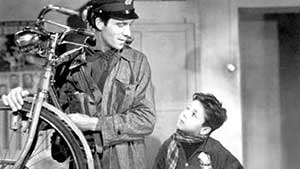

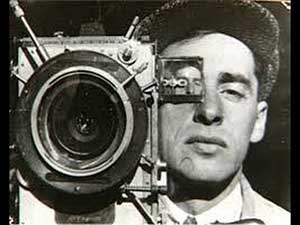

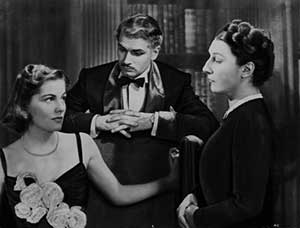
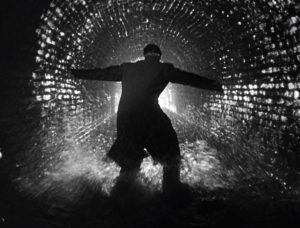
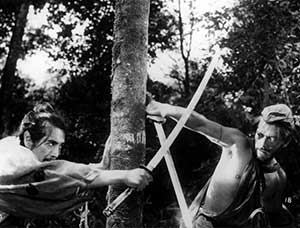


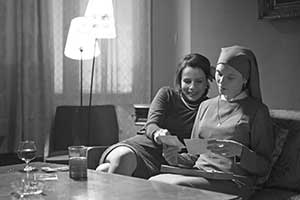
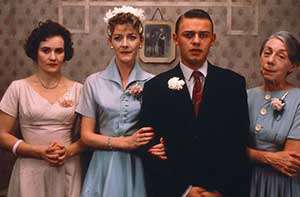


Adam Fischer - 2001, 2008
Thanks for sharing! I’ve only seen five of those so looking forward to trying the rest. Another one I always tell people about that never seems to make any “GOAT” lists is “The Wages of Fear”.
Reply